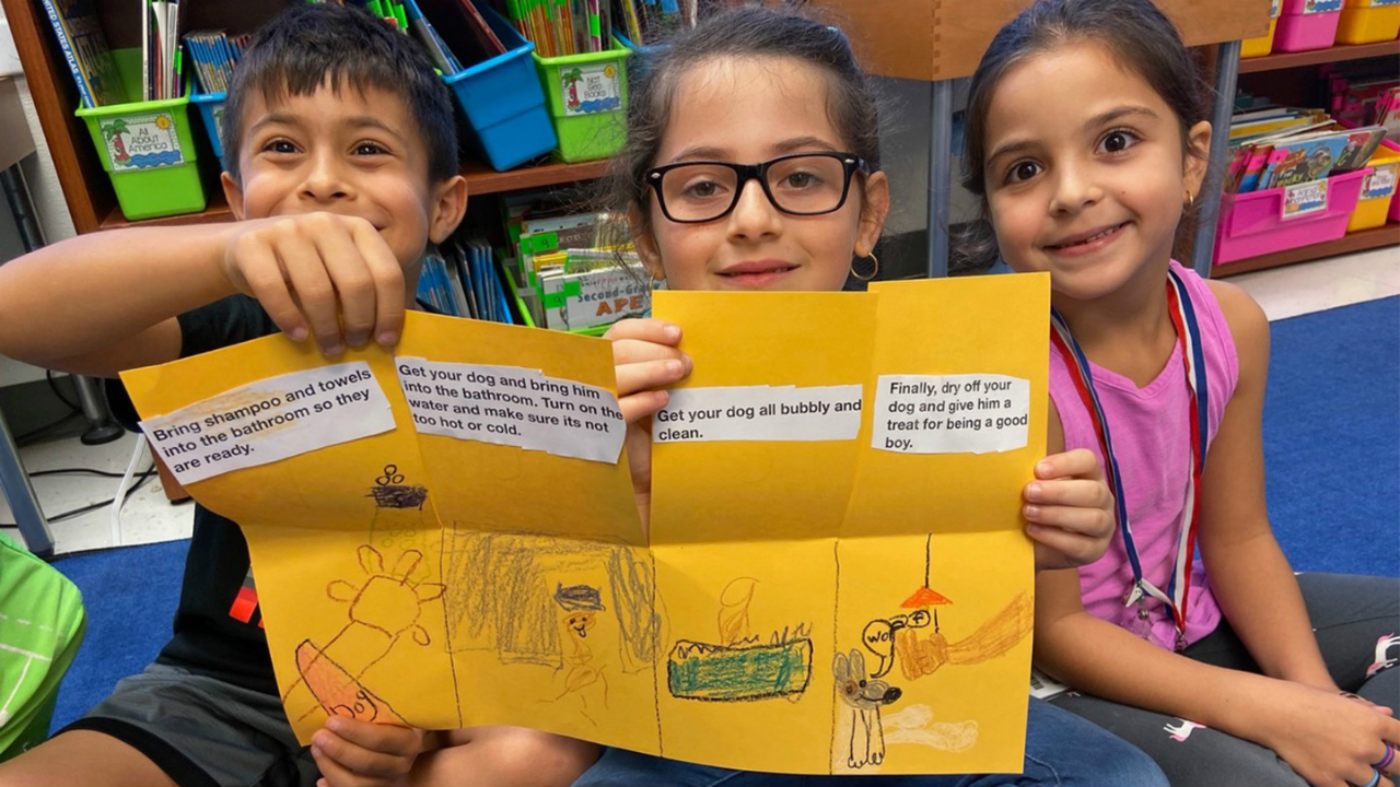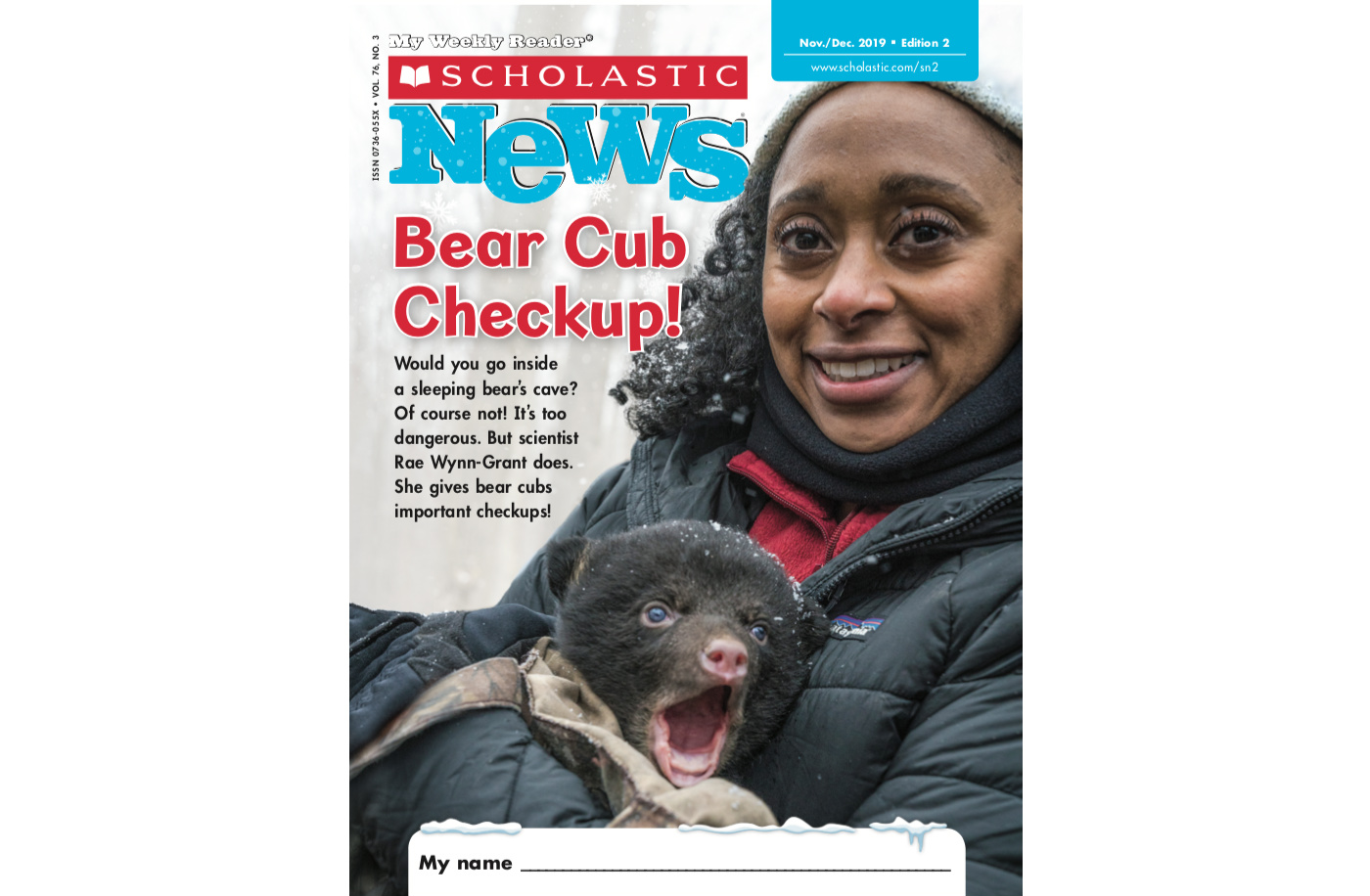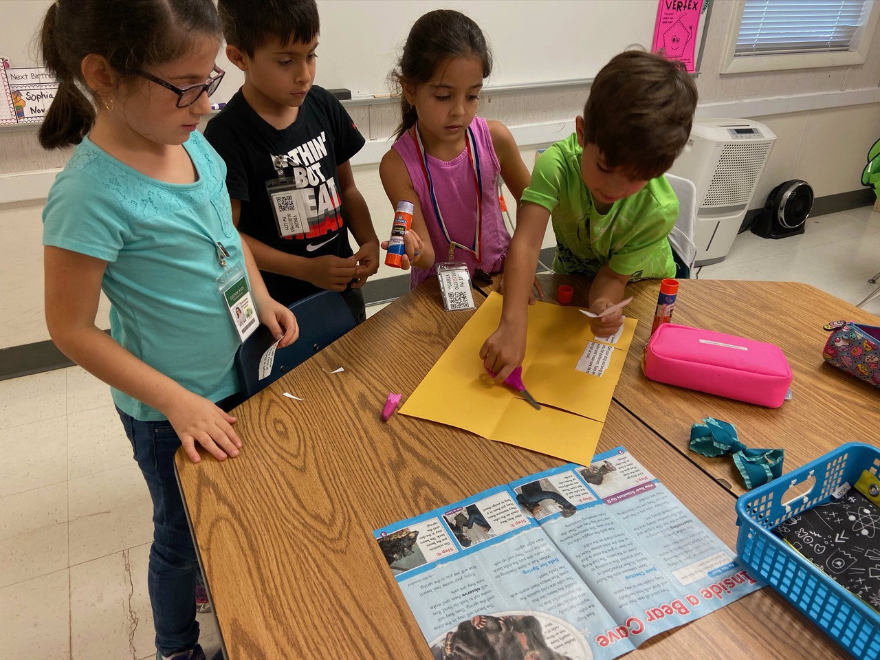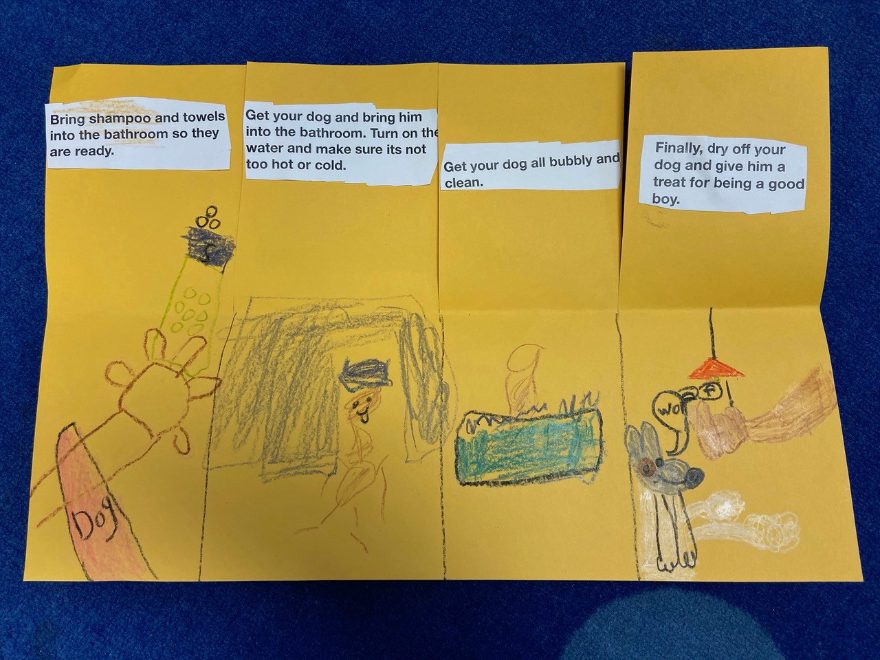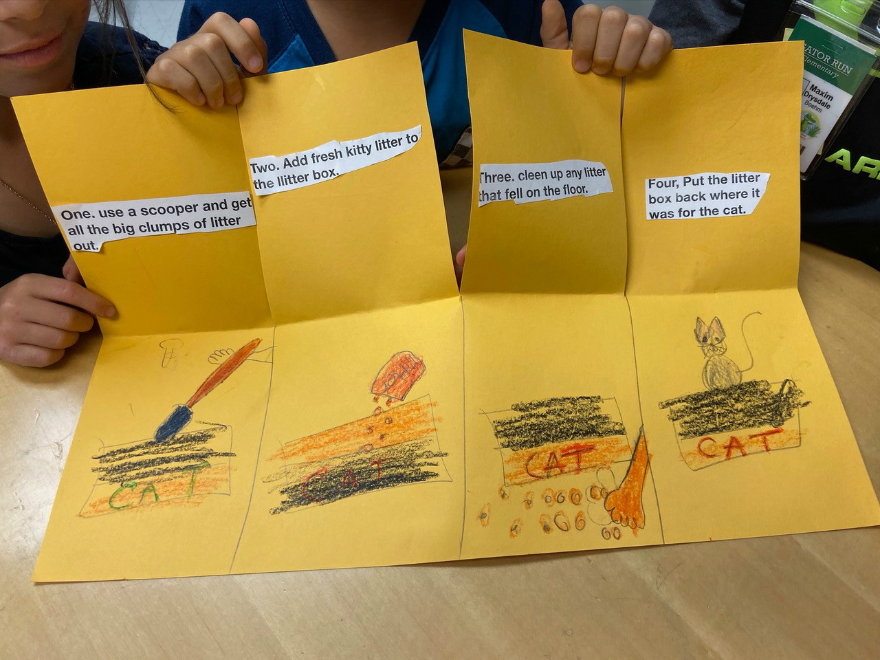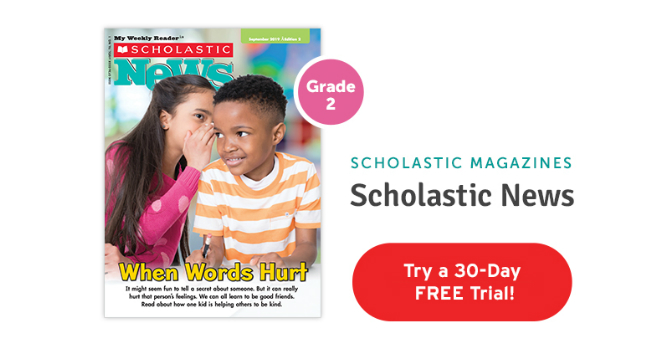- Capitalize on students’ natural curiosity about animals while practicing sequencing.
- Forge a home-school connection by having kids describe how they care for animals at home.
- Help students understand that there is usually a set process to completing a task—like bathing a dog or cleaning a litter box!
My kids were bear-y interested to learn about scientist Rae Wynn-Grant in Scholastic News for grade 2. She (carefully) goes into bear dens to care for sleeping cubs while their moms hibernate. This fascinating issue and its accompanying video about Dr. Wynn-Grant will be something my kids remember for a bear-y long time.
From this issue, I created a lesson that combined science and practice with sequencing, and gave the kids a chance to connect and share how they care for animals at home.
This is what we did:
1. Hold Up the Scholastic News Issue
I held up the cover of the issue. The kids could see the photo of a scientist holding a bear cub, but I covered up the words. I asked, “What do you think this issue is about?”
